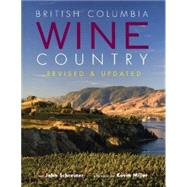
John Schreiner writes for Wine Access magazine and several wine-related websites. The author of 10 books on wine, including the best-selling Wineries of British Columbia and British Columbia Wine Country, he is a frequent judge at international wine competitions.
| Introduction to the Second Edition | p. 11 |
| Introduction to the First Edition | p. 15 |
| Wine Speak: A Modest Guide to Wine Jargon | p. 19 |
| Vancouver Island Wineries | p. 23 |
| Gulf Islands Wineries | p. 51 |
| Eraser Valley Vineyards | p. 67 |
| Winemakers Off the Beaten Path | p. 87 |
| Old Vines Country-the Vineyards of Kelowna | p. 103 |
| The Vineyards of Mount Boucherie | p. 121 |
| From Summerland to Peachland | p. 133 |
| Penticton and the Naramata Bench | p. 147 |
| Vineyards of Okanagan Falls | p. 179 |
| The Golden Mile | p. 195 |
| The Black Sage Road Neighbourhood | p. 219 |
| Osoyoos Lake Bench | p. 237 |
| The Similkameen Valley | p. 245 |
| Index | p. 256 |
| About the Author and Photographer | p. 264 |
| Table of Contents provided by Ingram. All Rights Reserved. |
The New copy of this book will include any supplemental materials advertised. Please check the title of the book to determine if it should include any access cards, study guides, lab manuals, CDs, etc.
The Used, Rental and eBook copies of this book are not guaranteed to include any supplemental materials. Typically, only the book itself is included. This is true even if the title states it includes any access cards, study guides, lab manuals, CDs, etc.